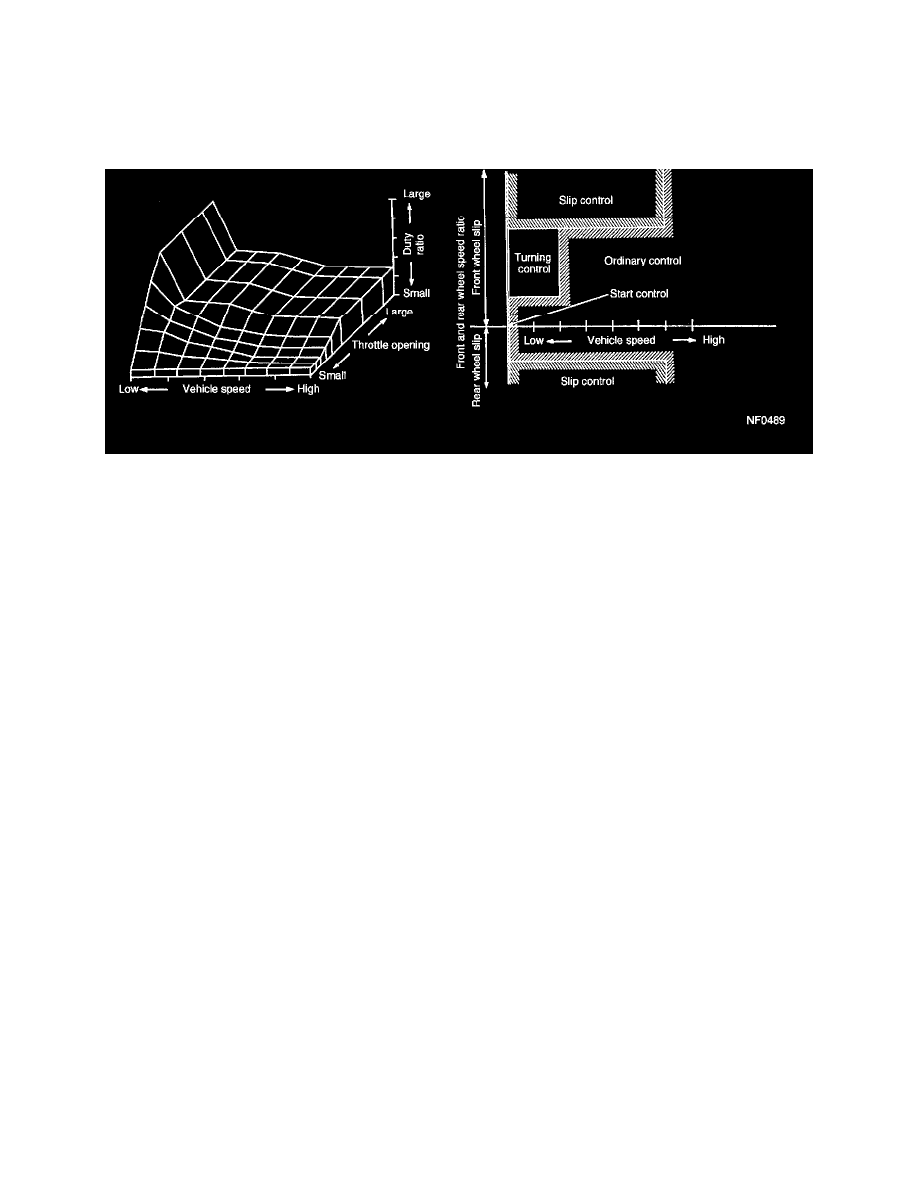Impreza 2.5 RS Sedan AWD F4-2.5L SOHC (2002)

When the vehicle speed is 0 km/h (0 MPH), the TCM makes control to generate differential action limiting torque that is proportional to the
throttle angle.
This enables the vehicle to start smoothly without swerving even on a slippery road.
4. TURNING CONTROL
The TCM makes a correction such that the input torque to the multi-plate clutch is reduced as the steering angle increases.
This function is performed to improves turning performance at certain vehicle speed range.
5. SLIP CONTROL
When front or rear wheels start slipping with the vehicle running slower than the predetermined speed, the TCM makes control to increase the
differential action limiting torque.
This function maintains traction and improves driving stability.
6. ABS CONTROL
When the TCM receives an ABS operation signal from the ABS unit, it adjusts the differential action limiting torque to the predetermined level
and selects the 3rd gear in which the one-way clutch is freewheeling.
This function improves ABS control.
7. BASE BRAKE CONTROL
When the brake switch is ON and the throttle valve is fully closed, the TCM makes control to decrease the differential action limiting torque. The
ABS control has priority over this control.
This function improves stability during braking.
8. 1 RANGE CONTROL
When the 1 range is selected, the TCM makes control to increase the differential action limiting torque.
This function improves driving performance and traction.
